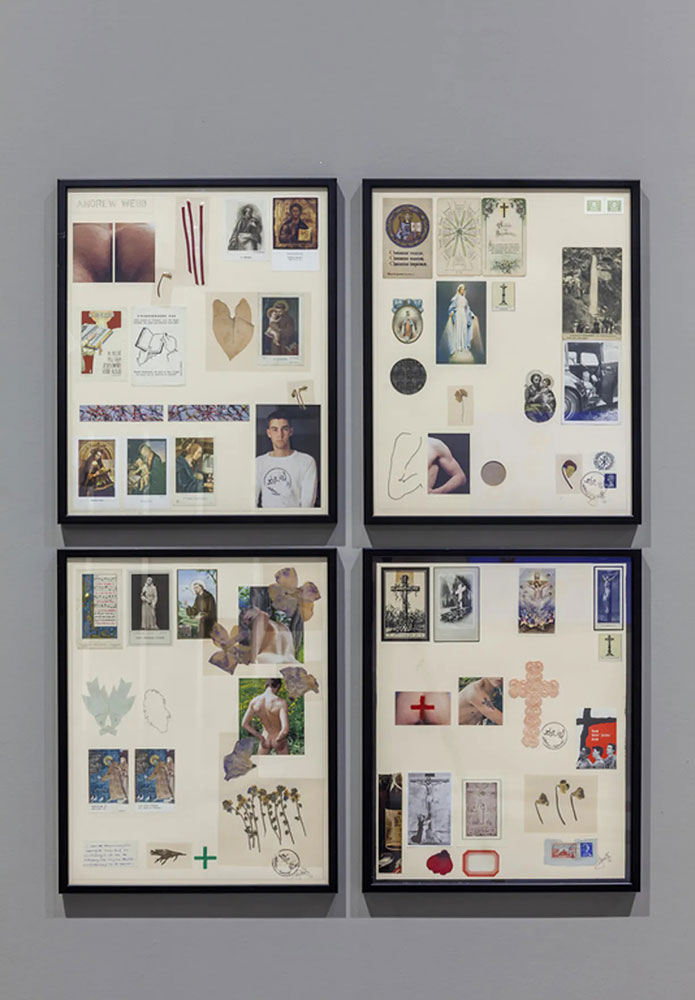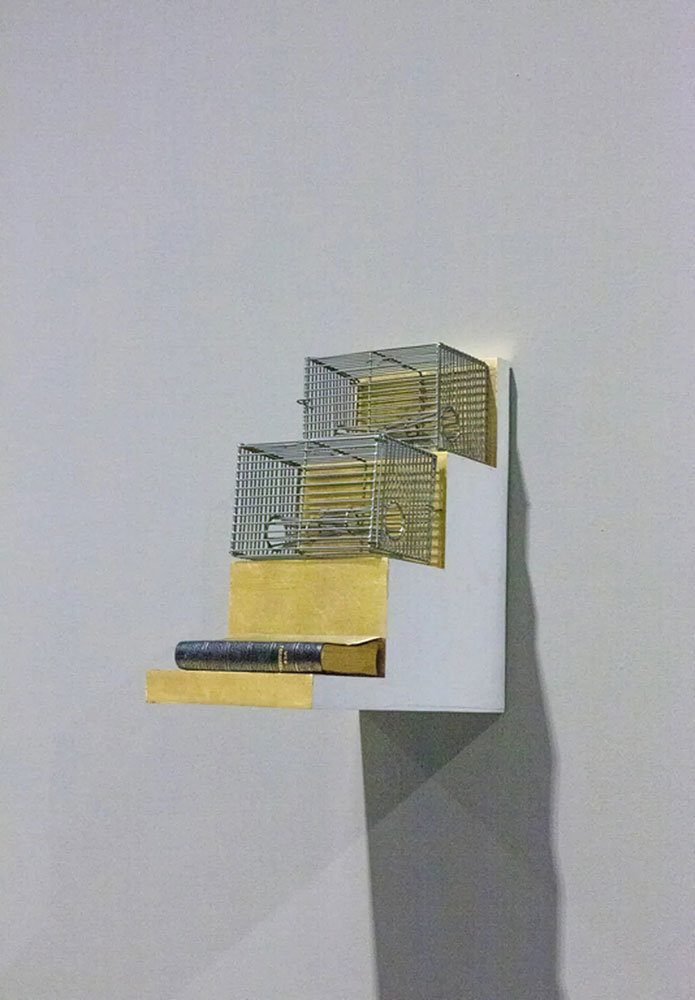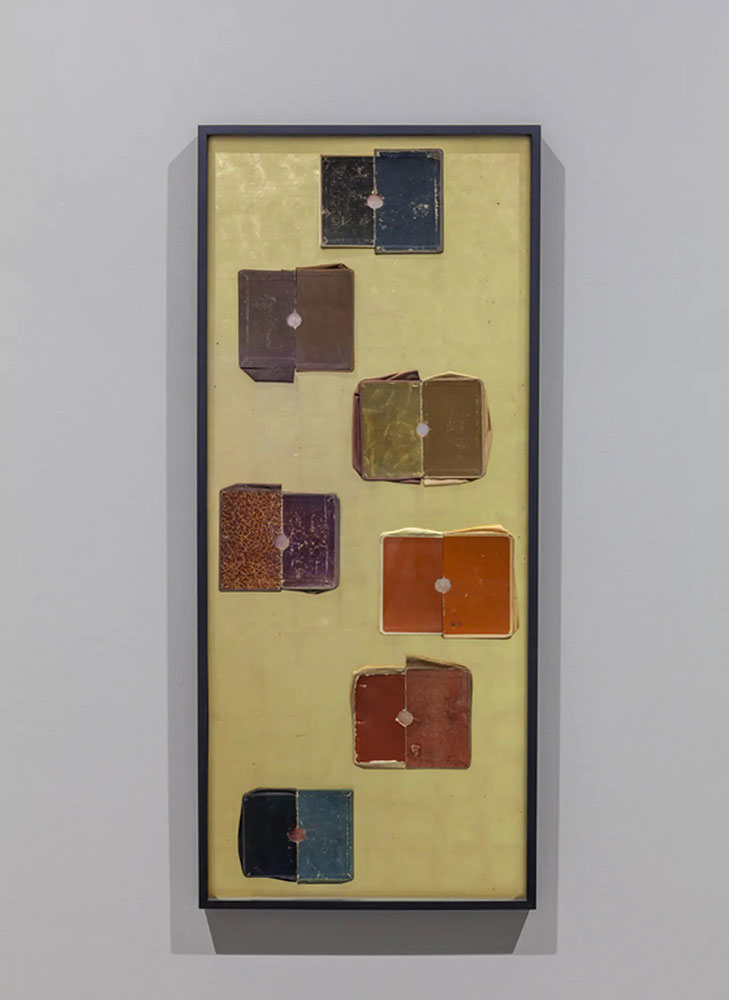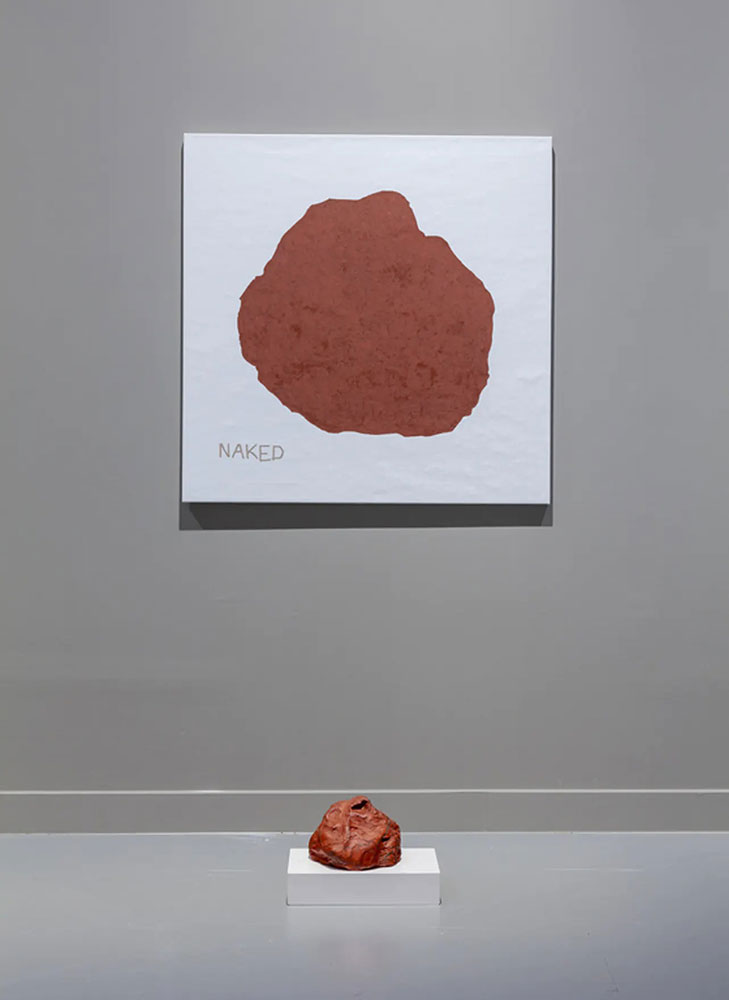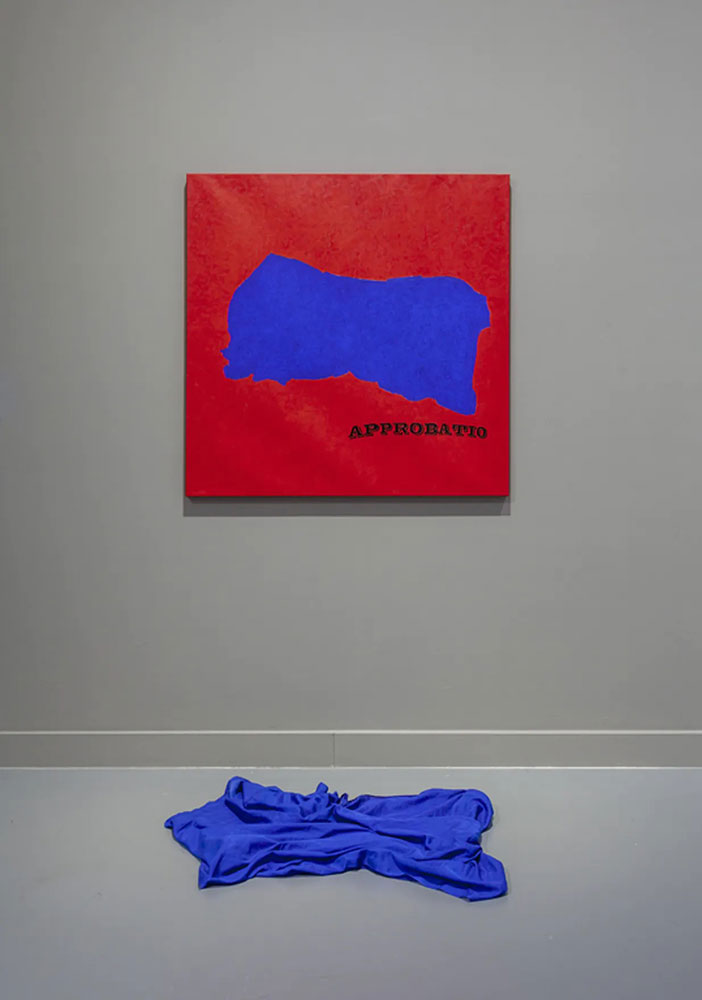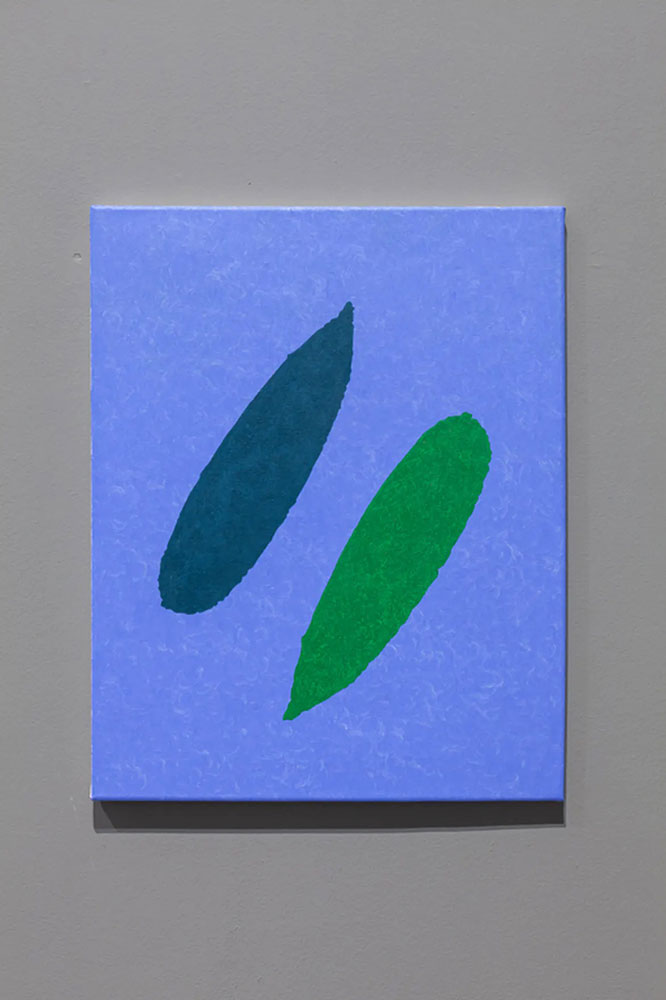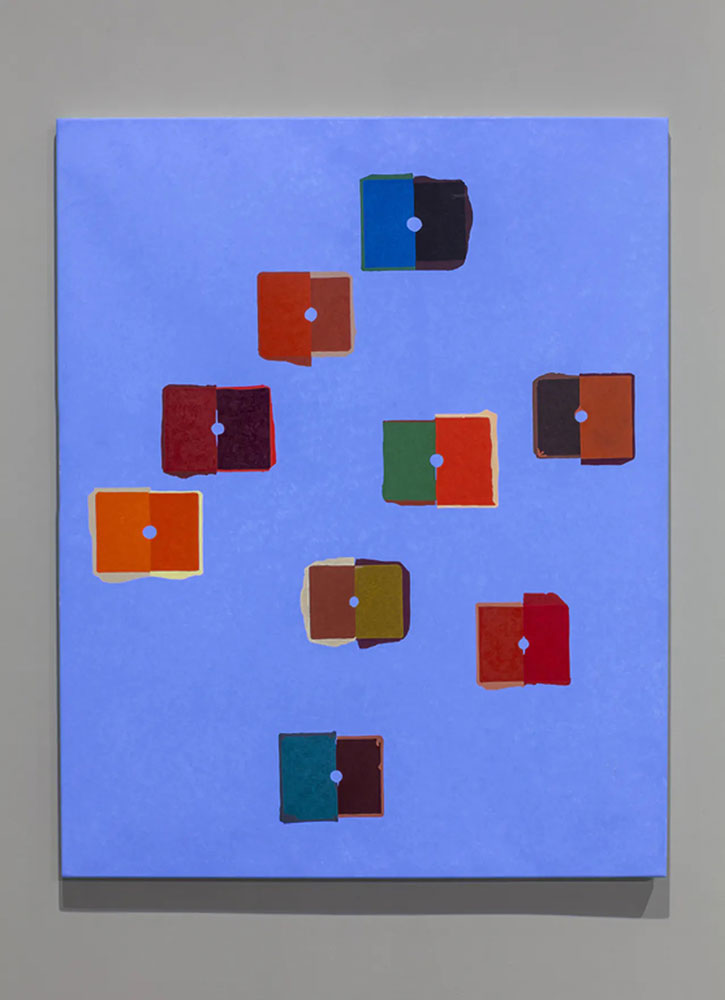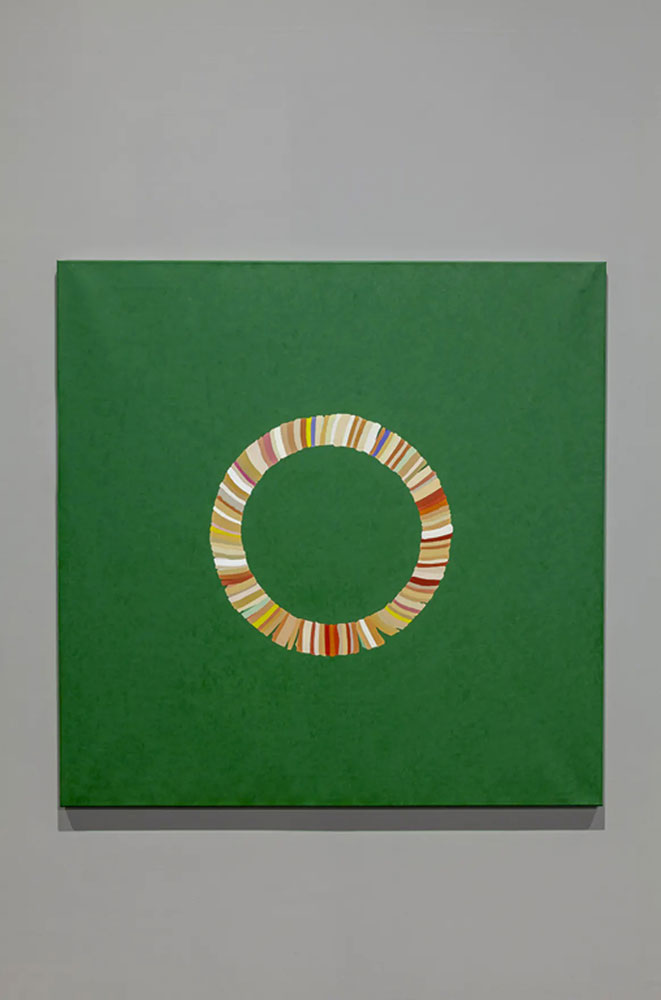PRESENTATION: Andrew Webb-I Will See You Tomorrow
 Andrew Webb (1966-2019) set to work in a contemporary way with style elements from Dadaism and surrealism. He made extensive use of language, using visual and phonetic puns and anagrams, featuring humour, eroticism and beauty. Webb’s initials – A & W – appear frequently in his oeuvre: this alpha and omega indicates Webb’s search for cosmic connection.
Andrew Webb (1966-2019) set to work in a contemporary way with style elements from Dadaism and surrealism. He made extensive use of language, using visual and phonetic puns and anagrams, featuring humour, eroticism and beauty. Webb’s initials – A & W – appear frequently in his oeuvre: this alpha and omega indicates Webb’s search for cosmic connection.
By Dimitris Lempesis
Photo: M HKA Archive
Initially, Andrew Webb’s work consists of objects and collages with a strong conceptual character. From 2011 onwards, he focuses more on painting, developing a typical oil paint brushwork. He creates very colorful canvases, with references, wordplay and poetic ambiguities. The paintings that are found after his death in his studio in Sandwich often refer to his important three-dimensional works and his collages and sculptures in which the frequent references to missals are notable. The intimate homage exhibition, “I Will See You Tomorrow”, provides a coherent overview of Andrew Webb’s artistic practice. Paintings and installations are supplemented with artist’s books, sketches and other documents from his archive. “The Line of Saved” was an ongoing work by Andrew Webb that he started on the 3rd of October 1997, in Antwerp, Belgium. The artist had started to collect ‘missals’ with which he intended to build a representation of the Tower of Babel. The work was 130532mm in 2008. The bell jar protects and at the same time allows ‘the line’ – a common motif in the history of modernism – to be drawn out, adopting various forms, changing its appearance in differing presentations. The line is constructed in sections all of which are recorded in the “List Of Saved”. The sections are traceable by their color sequences as they were found in the missals i.e.; purple, green, rose, green, purple or gold, gold or red, green, white etc. This ongoing work is also shown with ‘supplements’ such as “Extract”, a piece taken from the line and framed or “No Not”, a single piece of ribbon found and framed, both of which are measured and added to the list. “The Half Reach of J.L.B.” is an homage to the ‘Great James Lee Byars’. His performances, in which he would appear in a gold lamé suit – made to measure by Mr North South in New York – were an important aspect to Webb’s work. The sleeves of the suit would always be much longer than normal, covering the artist’s hands putting them beyond use, rendering the figure asocial, inept (the antithesis of the artist) and in the domain of the untouchable monarch. The title of “Apprentice Piece” refers to small scale pieces of furniture made by joiners apprentices to show their woodworking skills to their master carpenter. If the workmanship was considered of sufficient standard, then the apprentice could go on to work on the real, full-size pieces of furniture in the workshop. These items were called ‘apprentice pieces’. The work is part of a series of works called “Section d’Or” and as with the other pieces in this series the dimensions and structure of the object are taken from existing doors, in this case the double doors of the small studio in the artist’s apartment. The two holes filled by the missals relate to the glass panes in the original and therefor determine all other dimensions. The missals penetrate the object from opposing sides, so that if the viewer is in a position to read the title of the book, he can see the spine and the gold leaves simultaneously. As this motif is repeated on the other side of the object, an idea of circular motion is suggested – much like a revolving door. “Habillé jusqu’aux neufs” started out as a response to an invitation for participation in a group show called “Sample Sale” (1995), which took place at the Henn Gallery in Maastricht, The Netherlands. The following year the artist made a photographic work of himself wearing the ‘hat’ while leaning on its plinth – also titled “Habillé jusqu’aux neufs”. The shape of the hat/object is taken from a photograph of a ventilator on Fire Island, New York, similar to one used by Marcel Duchamp as a ready-made in 1915. An etching by Duchamp, made in 1964, is the only record of this now lost work. The object was inscribed: ‘Pulled at Four Pins’ a literal translation of the French idiom, ‘Être tiré à quatre epingles’. The English equivalent ‘Dressed up to the nines’ translated literally into French gives: ‘Habillé jusqu’aux neufs’ – Webb’s title. A ‘toile’ is a prototype garment made by a designer, from lightweight cotton. ‘Toile’, from the Latin téla, meaning ‘web’ and ‘toil’ can also be phonetically punned, in English, with the word ‘twirl’. The starting point for the set of collages, “Unfolding Leaves”, is the devotional cards and other material found saved in missals. They are littered with elements of humanism and classical references such as flowers, leaves and ribbons. The collages explore the amazing similarity between religious and physical iconography in Renaissance painting and contemporary images of the male figure and homosexual pornography. Some collages contain autobiographical elements and others directly reference artists of the modern period.
Photo: Andrew Webb, from left to right: SECTION D’OR I, 1999 (200 x 10 x 9 cm, wood, gesso, gold leaf); SECTION D’OR II, 2000 (diam. 90 x 4 cm); SECTION D’OR III, 2004 (190 x 78 x 8 cm, wood, gold leaf); SECTION D’OR IV, 2004 (77 X 20 X 1 cm, metal and gold leaf), Courtesy M HKA
Info: M HKA (Museum voor Hedendaagse Kunst Antwerpen), Leuvenstraat 32, Antwerp, Belgium, Duration: 2/5-29/8/2021, Days & Hours: Tue-Sun 11:00-18:00, www.muhka.be
